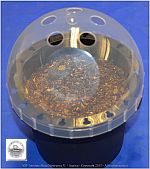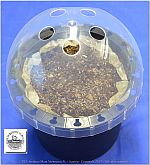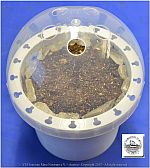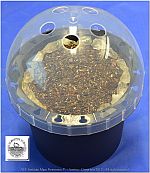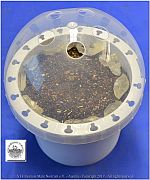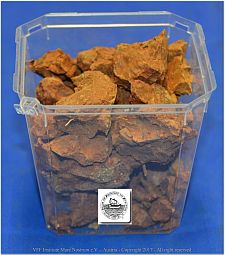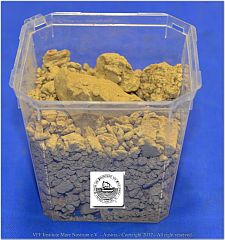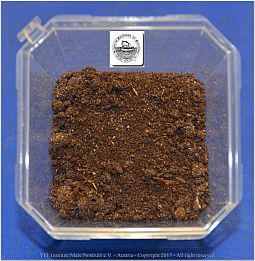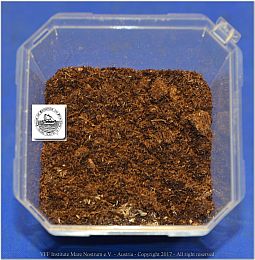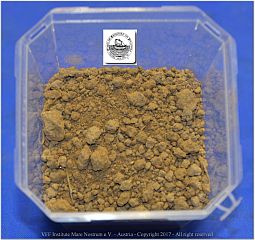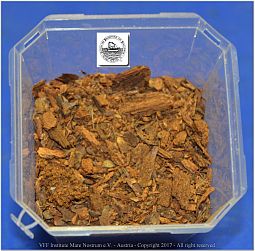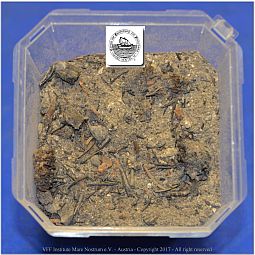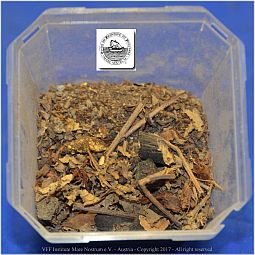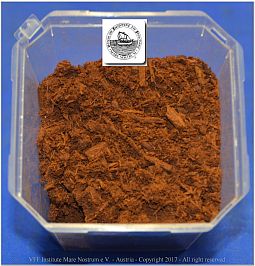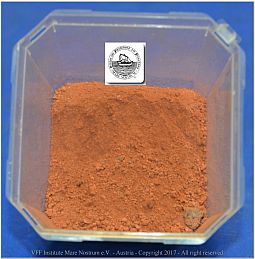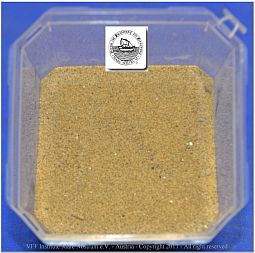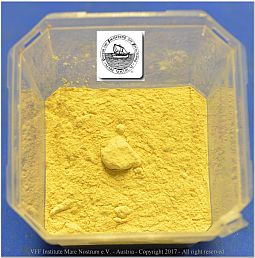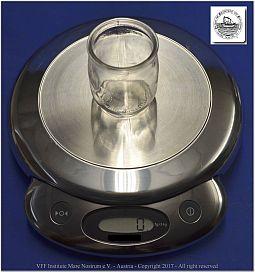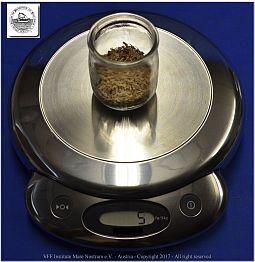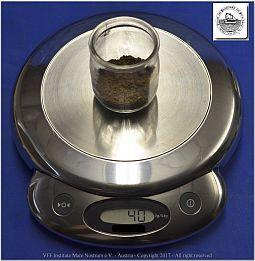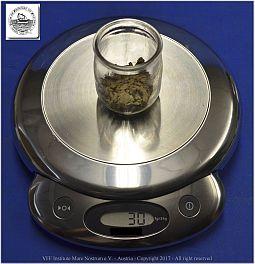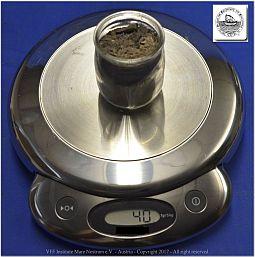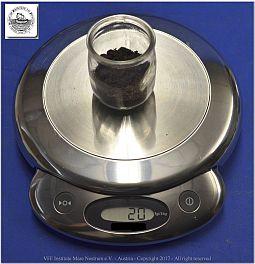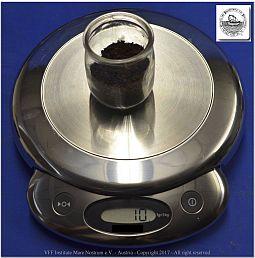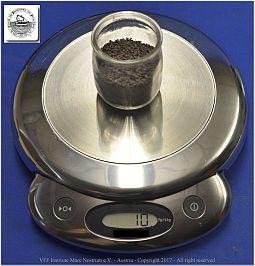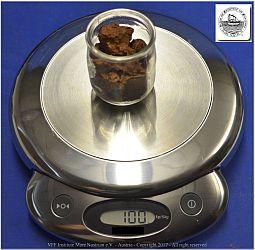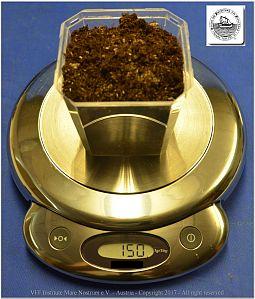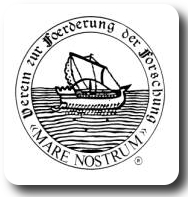 |
 |
| VFF Mare Nostrum e.V. - Austria | Green Legacy Hiroshima Initiative - Japan |
Hibaku Jumoku in Austria
Program 2016 - 2036
広島の原爆を生き抜いた樹木
Hiroshima’s A-Bomb survivor trees
| Readability Index |
13 |
| People of age ( years ) | 18-19 |
| INFORMATION |
FLOWCHARTS |
DETAILED TECHNICAL ANALYSIS |
TREES REFERENCES |
木魂 KODAMA |
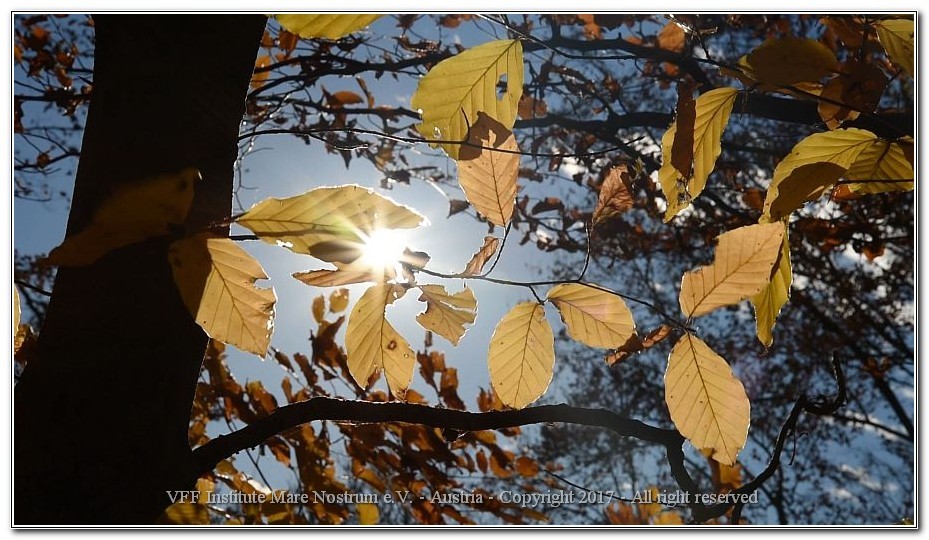
Österreichischer Wald - 2016
Source : VFF Digital Archive - Wildon
Author : VFF Institute Mare Nostrum e.V.
Allgemeine Informationen - General information - Informazioni Generali - Informations générales click on flag for more information |
|||
   |

 |  |  |
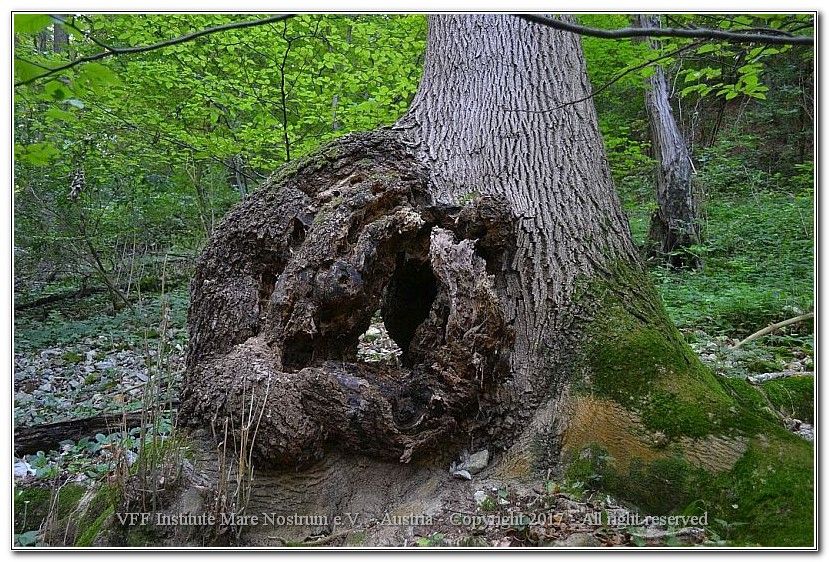
Österreichischer Wald - 2017
Source : VFF Digital Archive - Wildon
Author : VFF Institute Mare Nostrum e.V.
   |
1-EINFÜHRUNG
4-WEITERFÜHRENDE FAKTEN UND FOTOS Im folgenden Absatz weitere detaillierte Ansichten der in obiger Tabelle beschriebenen Keimungsphasen. |
||||||||||||||||

 |
1-INTRODUCTION
Modern plant cultivation methods during the course of time have been
increasingly influenced by mass production and have to some extent moved away
from the principles of balance of nature. During the last 100 years much
knowledge related to old cultivation methods and natural seeds conservation has
been lost. Thanks to those old
traditional methods many species of plants have been preserved until today, including
food plants and trees. Thus the ecological balance between man-made cultivation
impact and natural environment could be maintained.
Quite often such old cultivation methods are at a first glance considered to be unproductive but the truth is different.
During recent decades a wrong economic understanding of exchange of goods in
the agricultural sector has taken place. Industrial-scale goods distribution requirements
have a decisive impact on defining the prices of the goods as such.
Plants reproduce according to natural rules which man will never be able to
perfectly copy i.e. clone on a scale of 1:1 even if using molecular biology.
Ripe fruits and seeds fall from the plant to the soil within the natural process of ripening unless man interferes in this cycle. The soil protects and preserves the fallen seeds in a completely natural way forming a substratum. From which subsequently, by natural selection, new young plants grow. A good example is the walnut. In autumn the ripe nut falls down to the soil and remains there. It starts degrading but protects the seed inside until spring when the latter will germinate. Seeds are moved by natural factors like wind, water and animals but generally tend to remain near the original plant and form new young plants according to rules of nature. Man has tried egoistically to change those rules but has not applied the fundamental concept of "Kapieren und Kopieren" ( understand and copy ) as described in detail by Viktor Schauberger (Austria).
|
||||||||||||||||
 |
1-INTRODUZIONE
Le tecniche moderne di coltivazione agraria ed in selvicoltura, specialmente quelle relative alla produzione industriale di massa, non tengono conto degli equilibri e dei tempi della natura. Negli ultimi 100 anni sono andate perse molte antiche tecniche di coltivazione e di conservazione delle sementi. Contriaramente a quanto asseriscono i moderni tecnocrati, tali antiche metodologie hanno permesso nei secoli di potere salvaguardare numerose varietá di vegetali : piante per alimentazione ed alberi, al fine di mantenere il giusto equilibro fra presenza e sviluppo della civiltá umana e la natura che ci circonda. La giustificazione errata della bassa produttivitá nelle tecniche di coltivazione, risulta essere talmente banale e lapalissiana, perché la veritá é ben altra.... Negli ultimi decenni si é diffusa una errata concezione dell'organizzazione economica di scambio delle merci e dei prodotti specialmente nel settore agrario ove la distribuzione industriale svolge il ruolo di arbitro dei prezzi, le cui leggi e regole sono insindacabili. Il profitto detta legge sopra tutti e tutto, essendo il motore della economia capitalistica che si identifica esclusivamente nell’aspirazione al guadagno che si rinnovi con continuitá nel tempo, cioé il concetto di redditività programmata. La moneta rappresenta la base dell’economia capitalistica, essendo lo strumento fisico preposto per il calcolo razionale dei costi e dei ricavi. La demagogiga giustificazione che la politica diffonde da anni tramite frasi errate sia concettualmente che dal punto di vista grammaticale, dimostra che non vi é alcun interesse a tentare di trovare una via di uscita a questo vortice di devoluzione. L'errore comune é quello di rimanere nell'ambito di sterili discussioni di carattere utopico, mentre si continua a sprecare le risorse, il cibo ed il tempo... .... Dobbiamo favorire l'aumento dei consumi pro-capite delle famiglie, al fine di fare ripartire l'economia che risulta essere in stagnazione, per potere garantire un migliore e maggiore livello di benessere e di ricchezza pro-capite per il popolo ......... Questa frase, come del resto i tanti neologisimi di moda utilizzati o meglio storpiati dai politicanti dei vari paesi, nasconde un'altra realtá, quella di non volere trovare concretamente una soluzione definitiva ad esempio alle speculazioni economico-commerciali che la catena della distribuzione da anni attua a scapito del frutto del lavoro dei singoli contadini i quali oramai sono ridotti a semplici manovali della terra, costantemente vessati sia da leggi inique che da condizioni ambientali avverse, quali la siccitá che ogni anno si manifesta sempre piú e specialmente nei paesi dell'area del Mediterraneo. Tutto quanto sopra enunciato in modalità telegrafica, ma non polemica, dimostra quanto l'uomo moderno sia diventato cieco ed incapace di ricordare da dove viene e quanta fatica ha fatto nel corso dei secoli, per imparare attraverso metodi empirici ..ad utilizzare i doni gratuiti della natura. Ma questo non bastava...e l'aviditá lo ha condotto in un vicolo cieco. È inutile giustificare ogni nuova scoperta o progetto, con la classica frase " Il progresso della scienza non puó conoscere limiti ". Terminologie e slogans quali " Industria 4.0, Competitivitá, Globalizzazione omologante, Ecosostenibilitá..... " sono banali forme lessicali troppo spesso usate da soggetti che non solo non ne conoscono il reale significato, ma utilizzano tali termini solo per dare colore a discorsi propagandistici e giustificare le scelte di pochi che condizionano la vita di molti.  È necessario porre dei limiti alla insana deriva ideologica e filosofica che si stá diffondendo a vari livelli della societá moderna, ove in nome e per conto di ipocrite giustificazioni di fare del bene comune, in realtá sempre viene considerato il livello del profitto e del tornaconto , come metodo di valutazione dei risultati per ogni nuovo progetto o programma sociale, giustificando tutti i mezzi adottati per conseguire tali finalitá. Tornate all'antico e sarà un progresso
( Giuseppe Verdi -5 gennaio 1871 ) 2-LE REGOLE DELLA NATURA Le piante si riproducono secondo regole che l'uomo non potrá mai riuscire a clonare perfettamente in scala 1:1 neanche con la biologia molecolare. I frutti ed i semi cadono nella terra sottostante seguendo unicamente il proprio ciclo naturale, a meno ché non interferisca l'uomo tramite il suo intervento. I frutti maturano e cadono nella terra proteggendo i semi ed a seguito della selezione naturale, essi daranno vita a nuove piante. Questo processo naturale e millenario, non puó essere modificato se non in modo artificiale, cioé tramite azioni che niente hanno a che fare con il rispetto del ciclo biologico di ogni pianta. Prendiamo ad esempio una noce. Essa cade in prossimitá dell'albero madre ed inizia il processo naturale di decomposizione nel terreno, che ne proteggerá il seme fino alla primavera successiva, seguendo un ciclo che si ripete da milioni di anni. I semi non si spostano da soli se non tramite l'azione di agenti esterni quali Vento, Acqua ed Animali, ma per la maggior parte rimangono in prossimitá della pianta madre e generano nuove piante secondo regole che l'uomo tenta inutilmente, con arroganza e presunzione, di modificare a suo piacimento e tornaconto, ma senza avere realmente compreso l'elementare concetto del " Kapieren und Kopieren ", come ampliamente descritto da Viktor Schauberger ( Austria ) : 3-PROCEDURE DI GERMINAZIONE Nel nostro Istituto VFF, non seguiamo alcun programma industriale, né abbiamo interesse ad effettuare inutili ricerche in campo biogenetico per ottenere ibridi o migliorare la produttivitá dei vegetali adibiti all' alimentazione umana. Tali metodologie sono in netto contrasto con le basi del metodo scientifico del " Kapieren und Kopieren " e con le nostre norme di etica morale. Per i semi delle 5 specie di Alberi Hibaku Jumoku che il nostro Istituto VFF ha ricevuto da Green Legacy Hiroshima, abbiamo attuato la procedura descritta negli schemi successivi ( Flowchart 1 / Flowchart 2), che in sintesi riassumiamo in ordine sequenziale :
4-DETTAGLI TECNICI e FOTOGRAFIE Al seguente paragrafo, potrete prendere visione nel dettaglio, delle varie procedure descritte nella tabella precedente. |
||||||||||||||||
 |
L’introduction dans le secteur agricole de l’économie de marché moderne où la distribution industrielle dicte lois et prix a totalement bouleversé les pratiques et conduit à l’abandon d’antiques techniques de culture avec la fausse justification de leur basse productivité. Moteur de l’économie capitaliste, la recherche exclusive d’un profit monétaire renouvelé et accéléré a conduit l’agriculture loin des temps de la nature et loin de sa biodiversité. Elle a rendu l’homme aveugle et incapable de se rappeler qu’il est le fruit d’une nature luxuriante à respecter, à protéger et à conserver sans laquelle il ne saurait survivre.
Les graines ne déplacent jamais seules sinon par l’action des vents, des eaux au des animaux et la plupart du temps poussent à proximité de la plante mère engendrant des nouvelles plantes selon des règles que l’homme tente avec arrogance de changer à son illusoire bénéfice, sans avoir vraiment compris le concept de base de « Kapieren und Kopieren » décrit par Viktor Schauberger ( Autriche).
|
Walnut Tree
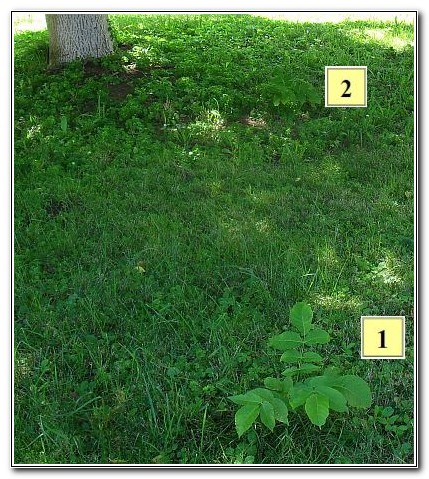 |
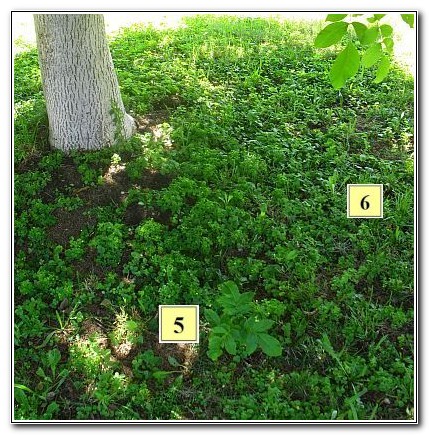 |
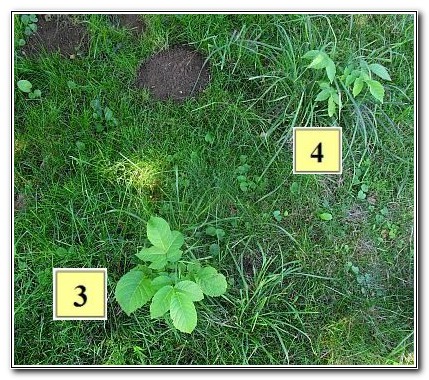 |
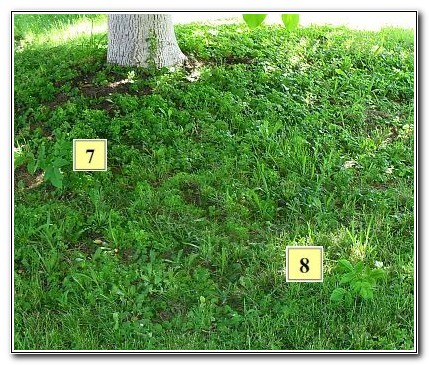 |
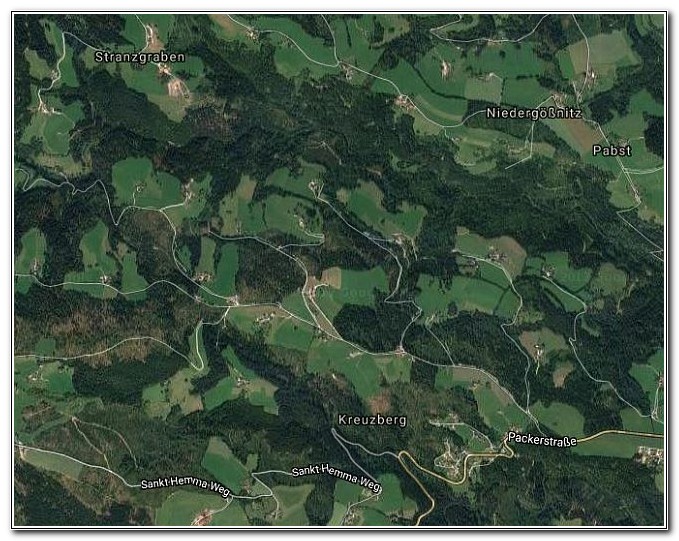
Map 47°01'21.8"N 15°02'03.8"E
| FLOWCHARTS |
| FLOWCHART 1 |
FLOWCHART 2 |
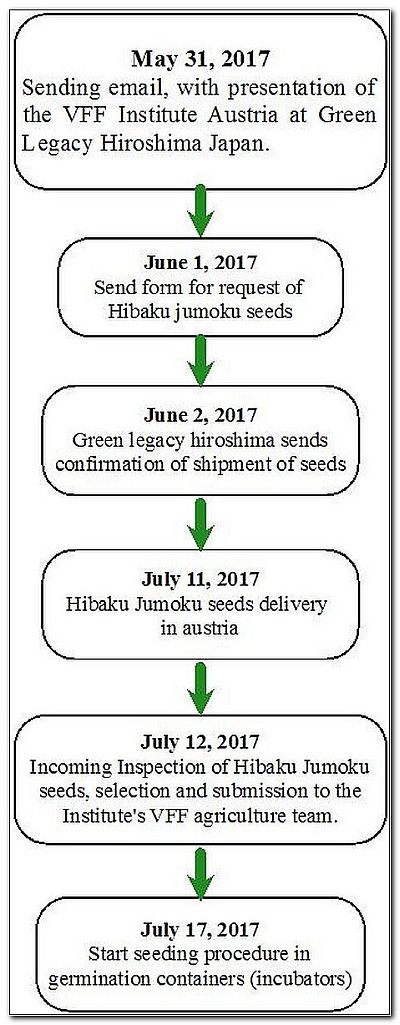 |
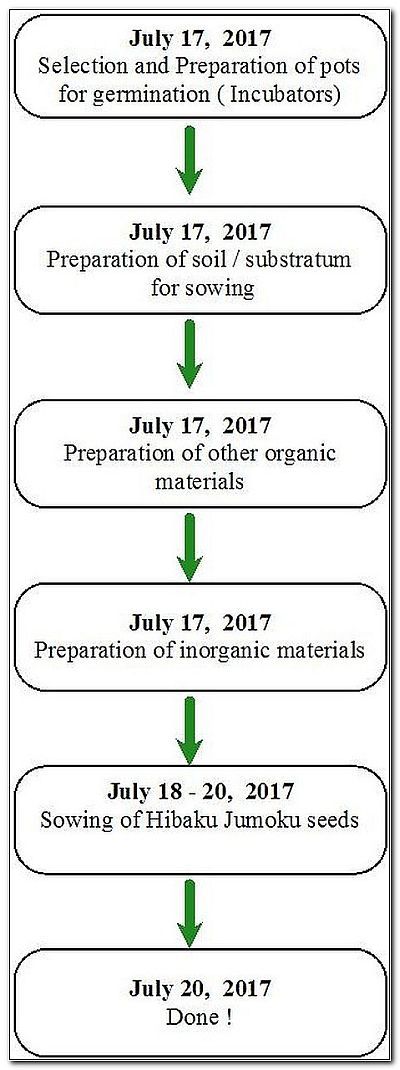 |
| DETAILED TECHNICAL ANALYSIS Preparation of soil / substratum for sowing and of pots for germination ( Incubators) |
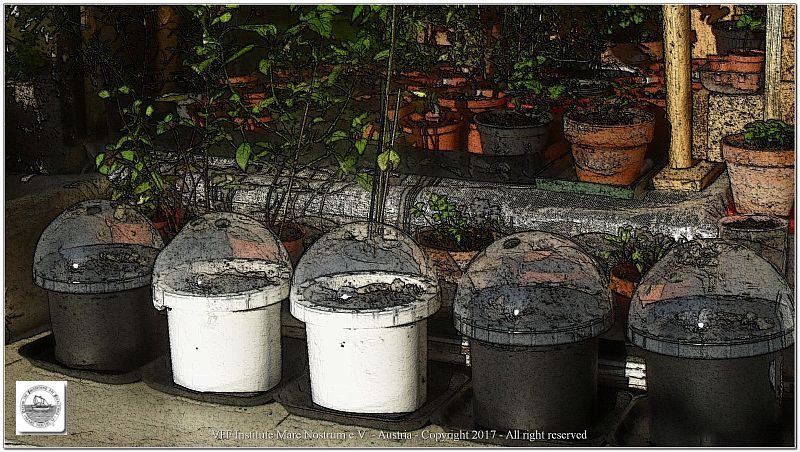
| Step 1 |
Step 2 |
Step 3 |
||||||||||||||||
| Preparation of soil / substratum for sowing | Preparation of pots for germination ( Incubators) |
Positioning of germination area and orientation east-west |
||||||||||||||||
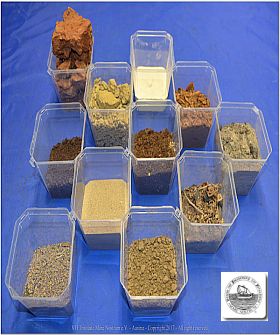 Various Potting Soil 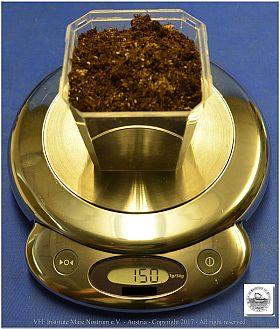 Potting soil with wood mulch |
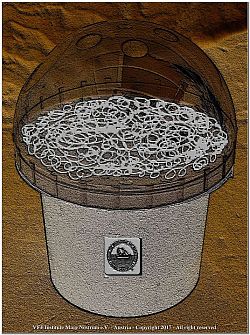 Incubator 1 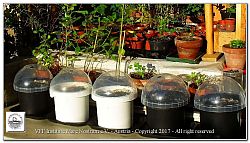 Incubators 1 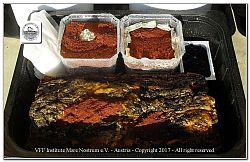 Incubator 2 ( Open ) |
|
||||||||||||||||
| STEP 1 - HOW TO PROCEED |
| STEPS |
PHOTOS |
DESCRIPTION |
||||||||||||||||||||
1.1 |
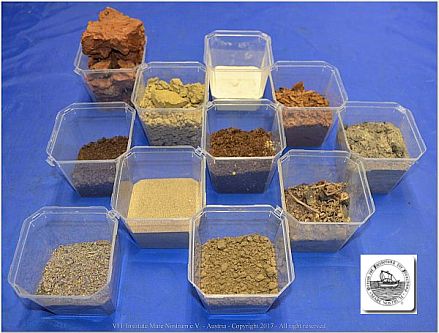 Various Potting Soils, Minerals and Wood Mulch |
|
||||||||||||||||||||
1.2 |
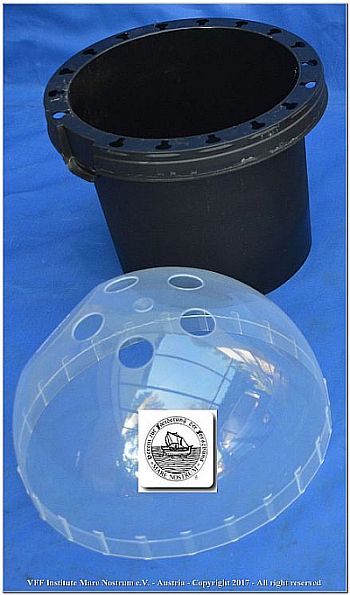 Incubator standard size ( 15 cm internal diameter ) |
DATA SHEET
Note 1 : 100% polypropylene - recyclable
|
||||||||||||||||||||
1.3 |
Potting soils selection ( Without Perlite and Vermiculite ! )
|
|
||||||||||||||||||||
1.4 |
Other organic materials 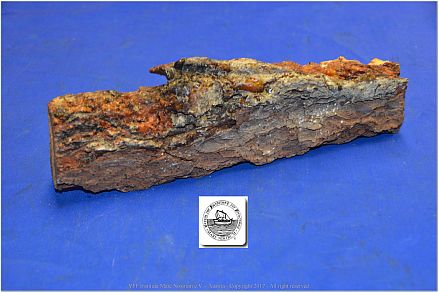 Spruce bark with resin 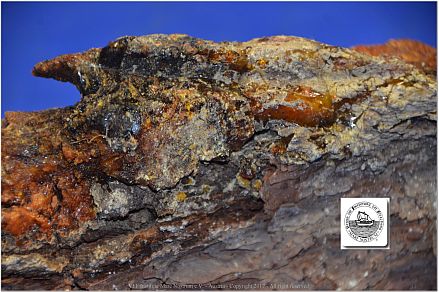 Spruce bark with resin ( Details ) |
Other organic materials 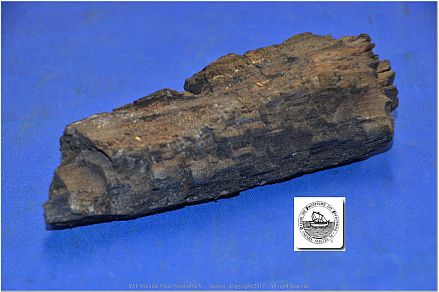 Carbonized wood hit by a lightning strike 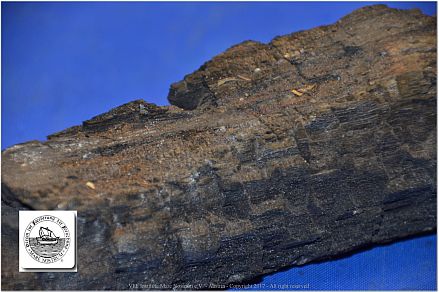 Carbonized wood hit by a lightning strike ( Details ) |
||||||||||||||||||||
1.5 |
ORGANIC DRAINAGE 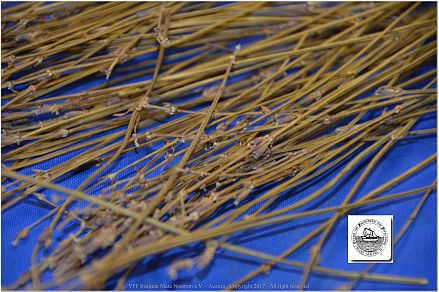 Lavender branches - Organic Drainage - Layer 1 |
ORGANIC DRAINAGE 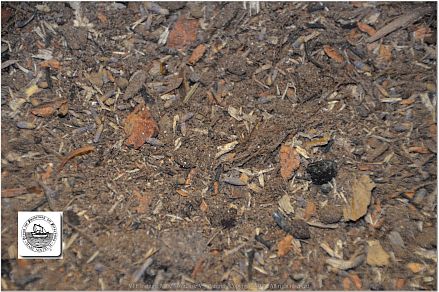 Potting soil - Organic Drainage - Layer 2 |
||||||||||||||||||||
1.6 |
INORGANIC DRAINAGE 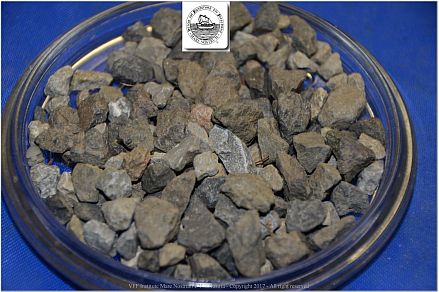 |
INORGANIC DRAINAGE 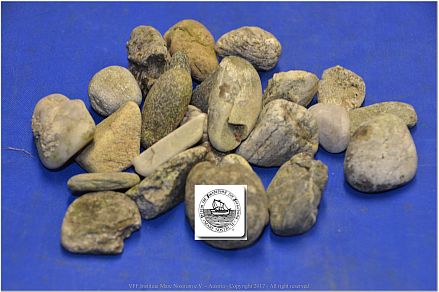 |
| STEP 2 - HOW TO PROCEED |
| STEPS |
PHOTOS |
DESCRIPTION |
|||||||||||||||||||||||||||||||||||||||||||||||||||||||||||||||||||||||||||||||||||||||||||||
2.1 |
Balance measurements of Potting Soils
|
TABLE 1 Calculation for preparation of 420g sowing soil (for 1 incubator)
Total ..................... 420 g |
|||||||||||||||||||||||||||||||||||||||||||||||||||||||||||||||||||||||||||||||||||||||||||||
2.2 |
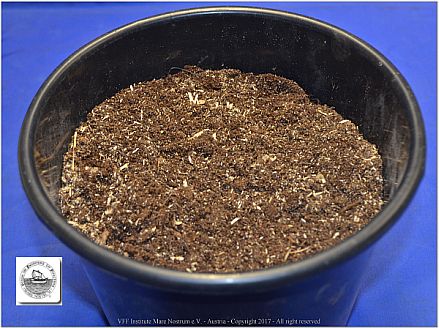 Potting soil ( Ready for use ) |
 ........the document is being updated......... |
| DETAILED INFORMATION of TREES |
| Tree name |
Tree pictures | Seeds pictures |
Link download technical data - Reports - Statistics |
||||||||||||||||||||||||||||||||||||||||||||||||||||||||||||||||||||||||||||||||||||||||
Kurogane Holly Ilex Rotonda クロガネモチ NO9A11-01 |
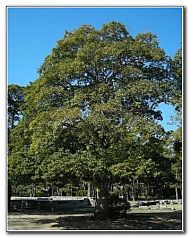 |
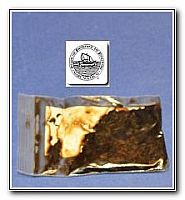 |
|
||||||||||||||||||||||||||||||||||||||||||||||||||||||||||||||||||||||||||||||||||||||||
Camellia Japonica ヤ ブツバキ NO7A7-01 |
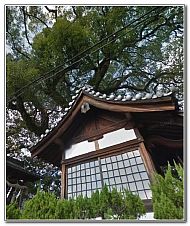 |
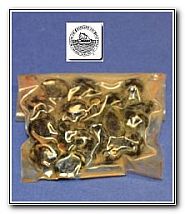 |
|
||||||||||||||||||||||||||||||||||||||||||||||||||||||||||||||||||||||||||||||||||||||||
Jujube Ziziphus Jujuba ナツメ W14B29-01 |
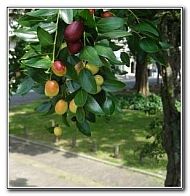 |
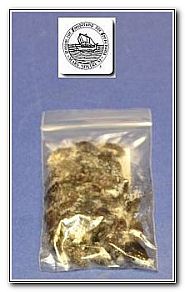
|
|
||||||||||||||||||||||||||||||||||||||||||||||||||||||||||||||||||||||||||||||||||||||||
Ginkgo Biloba イ チョウ N11A19-01 |
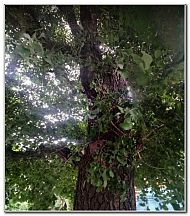 |
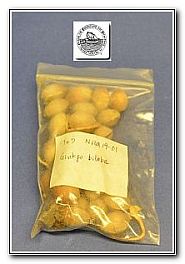
|
|
||||||||||||||||||||||||||||||||||||||||||||||||||||||||||||||||||||||||||||||||||||||||
Japanese Hackberry Celtis Sinensis var. japonica エノキ S05AB-01 |
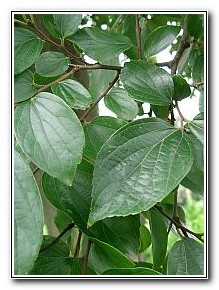 |
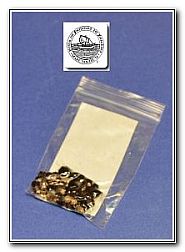 |
|
|
木魂 KODAMA
|
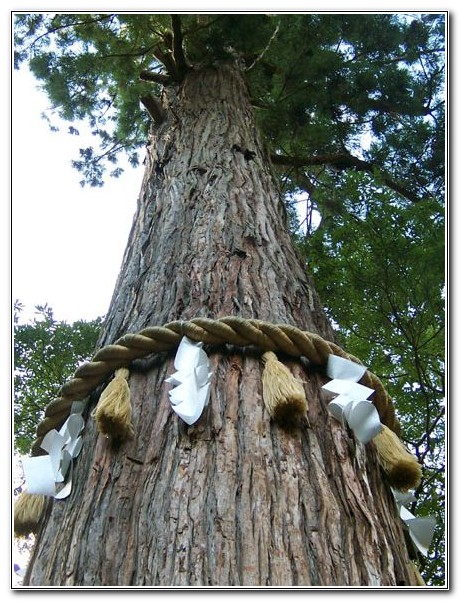
Shimenawa around a giant Sugi at the Yuki shrine in Kyoto
Copyright 2005 Chris Gladis (MShades) - Link
   |
In Japan entstand zuerst die gesprochene und
danach die geschriebene Sprache . Laut japanischer Überlieferung besitzt Kodama
übernatürliche Kräfte. Einen von Kodama bewohnten Baum zu fällen, war ein
Sakrileg und brachte Unglück. Wer Kodama erblicken konnte, wurde als gesegnet angesehen und durfte sich glücklich schätzen. Der Ort einer solchen Erscheinung wurde als vital und voll positiver Energie bezeichnet. Mit Beginn der Zeit der Edo bzw Tokugawa 徳川時代 / Tokugawa jidai 1603-1868 wurden die Kodama nicht mehr als Göttlichkeiten des Waldes angesehen und daher den Yokai, allgegenwärtige spirituelle Wesen in der japanischen Überlieferung, gleichgestellt. Demnach konnten die Kodama auch menschliches Aussehen annehmen, um, wie in der Literatur beschrieben, um die Hand ihrer Liebsten anzuhalten. Die Kodama gaben antike überlieferte Erinnerungen weiter.... waren also die Wächter des Gedächtnisses der Zeiten. Ebenso könnten auch die Bäume Hibaku Jumoku die Erinnerung an die Atomkatastrophe in sich tragen und durch ihr Überleben ein immerwährendes Mahnmal für die zukünftigen Generationen darstellen. Als ob das Rascheln ihrer Blätter uns eindringlich mahnen soll und dieses Mahnen vom Wind überallhin getragen wird: Nie mehr solches Leid ................. Die Samen der Bäume Hibaku Jumoku sind mittlerweile auf der ganzen Welt verbreitet und von Personen guten Willens betreut, als Zeugnis für nachfolgende Generationen - abgesehen vom in Hiroshima und Nagasaki niedergegangenen Leid - der Konsequenzen des Überschreitens der Grenzen des wirklich nützlichen Fortschritts für die Menschheit |

 |
THE SPIRIT OF TREES In Japan first the spoken language and then
the written one were formed. According to Japanese tradition Kodama has
supernatural powers. Felling a tree inhabited by Kodama was a sacrilege and
caused misfortune . If a person happened to see Kodama, he/she was considered blessed and lucky. The place where the appearance happened was said to be full of vital positive energy. Starting the period of Edo or Tokugawa Shogunate 徳川時代 / Tokugawa jidai 1603-1868, the Kodama stopped to be considered divinities of the wood and therefore were equalled to the Yokai, omnipresent spiritual beings of Japanese tradition. So the Kodama could also adopt a human appearance looking like man and as is told in literature, asking to marry their loved one. The Kodamas passed on ancient traditional memories….. so they were in a sense the guardians of memory of all times. In this sense also the trees of Hibaku Jumoku may well bear the memory of the nuclear catastrophe. Having survived it they represent an eternal memorial for future generations. It seems as if the rustling of the trees´leaves should remind us never to forget and the wind spreads this admonishment throughout the world: Never again such suffering ................. The seeds of the Hibaku Jumoku trees during the course of deacdes have been distributed all over the world and the plants are looked after by persons of good will. The trees´ legacy for mankind is to keep in mind the negative consequences of human action overstepping the limits of really useful technological progress- not to speak of the suffering caused to Hiroshima and Nagasaki. |
 |
In giappone é nata prima la lingua parlata e poi quella scritta. Sempre secondo la antica tradizione giapponese, il Kodama
possiede poteri sovrannaturali e l'azione di abbattere, tagliare o
ferire un albero ove risiedeva un Kodama, rappresentava un sacrilegio e
possibile fonte di sventura. Per chi riusciva a vedere un Kodama, questo era
considerato una benedizione ed un buon augurio, perché significava che
il luogo ove si era verificata la visione, era vitale e pieno di
energia positiva. All'inizio del periodo Edo o periodo dello Shogunato Tokugawa 徳川時代 / Tokugawa jidai 1603-1868 , i Kodama non vennero piú considerati degli Dei della foresta e vennero accomunati agli Yokai, gli spiriti onnipresenti nella tradizione giapponese. Pertanto, i Kodama potevano prendere le sembianze umane, come descritto in molti racconti ove alcuni Kodama si trasformavano per sposare le loro amate. I Kodama, avevano e tramandavano ricordi di tempi antichi, ancestrali...... quindi erano i custodi della memoria dei tempi. Gli Hibaku Jumoku, forse anche loro hanno il ricordo
della catastrofe nucleare e sono sopravvissuti come monito omnipresente
per le generazioni future, generando con il movimento dei loro rami e
delle foglie, un lamento, un eco ..... che il vento trasporta ovunque:
I semi degli alberi Hibaku Jumoku, sono sparsi nel mondo
e raccolti da persone di buona volontá, con l'impegno di testimoniare e
raccontare alle nuove generazioni, non il dolore, perché esso é intriso
nella terra di Hiroshima e Nagasaki, ma la conoscenza delle conseguenze
che si manifestano quando l'uomo supera il confine di ció che é
veramente utile per il progresso della umanitá. |
 |
Selon
la tradition orale antique du Japon le Kodama était un Kami, une divinité de la
nature indissolublement liée aux arbres. Elle avait le pouvoir surnaturel d’aller
d’arbre en arbre et d’émettre des sons imitant la voix des hommes par un effet
d’éco. Les arbres aux esprits abritant un Kodama étaient ornementés d’une corde
sacrée appelée Shimenawa. Abattre, couper ou
blesser un arbre accueillant un Kodama constituait en effet un sacrilège et un
présage de malheur dont les hommes devaient se garder. Voir un Kodama était au
contraire une bénédiction, un heureux augure et le signe bénéfique que ce lieu de
la vision était animé par une énergie vitale positive. La signification du Kodama muta au
début de la période Edo, dite aussi période Shogunat Tokugawa, 徳川時代 / Tokugawa jidai 1603-1868.
Les kodama déchurent de leur statut de Dieux de la forêt et furent assimilés alors
aux Yokai, les esprits omniprésents dans la tradition japonaise. Les Kodama
pouvaient maintenant prendre les apparences humaines notamment pour convoler en
noce avec leur bien aimée comme de nombreux récits le narrent. Les Kodama avaient souvenir des
temps ancestraux. Ils étaient les gardiens de la mémoire des temps. Les Hibaku Jumoku, eux aussi ont,
qui sait, conservé la mémoire de la catastrophe atomique soufferte et n’ont,
qui sait, survécu que pour nous faire entendre à travers l’ondulation de leurs
branches et le bruissement de leurs feuilles, une lamentation, un éco… que le
vents transportent partout à jamais: Recueillies par des personnes de
bonne volonté, les graines des arbres Hibaku Jumoku sont désormais parsemées
dans le monde. Elles témoignent aux nouvelles générations, non pas cette souffrance
inextinguible des terres d’Hiroshima et de Nagasaki, mais cette conscience que
l’homme doit œuvrer non pour la destruction mais bien pour la construction de l’humanité.
|

Kobayashi Izanami and Izanagi
Author : Kobayashi Eitaku, Izanagi and Izanami - 1885 - Link

International Campaign to Abolish Nuclear Weapons (ICAN)
| TREES |
 |
SUMMARY |
 |
DISCLAIMER |

| HOME PAGE | CONTACT |
